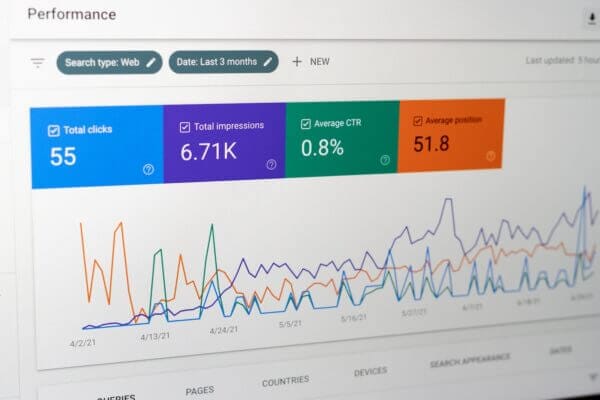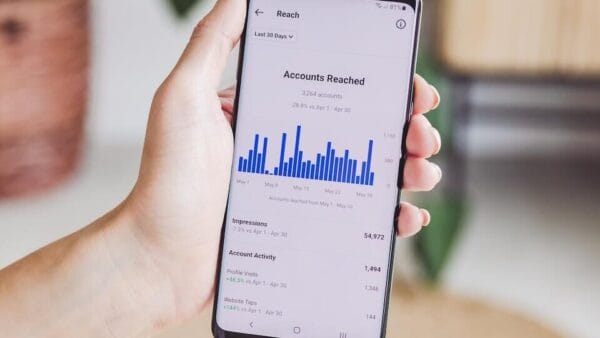Content Marketing for Ecommerce: 8 Tips for Driving Traffic and Sales
Discover top content marketing tips to take your ecommerce business to the next level of success. Engage your audience and encourage profitable customer behavior through informative and engaging content

As an ecommerce business owner, you know how important a strong online presence is. And one of the most effective ways to do that is through content marketing. At its core, content marketing is all about creating and sharing informative, engaging, and consistent content that captures the attention of a certain audience. The overall goal is to encourage profitable customer behavior.
If this sounds like an area your ecommerce business could improve upon, and let’s face it what business couldn’t use a few helpful tips, then keep reading for some top content marketing advice. These are all designed to take your ecommerce business to the next level of success.
Get the Best Updates on SaaS, Tech, and AI
1. Know Your Audience

Before you start creating content, getting a solid understanding of your target audience is crucial. When you know who your target audience is and what they are interested in, it becomes easier to tailor your content to suit them. And, once you’ve done this, you’ll be able to create more effective, engaging content that your readers will be interested in.
There are a number of steps you’ll need to take to get to know your audience better. Start by conducting thorough market research looking at current trends and indicators of where things may be headed.
Next, you need to create buyer personas, which means you’re gathering the demographics that spell out your audience. Look at things such as income level, age, interests, buying habits and so forth.
Then it’s time to analyze your website and social analytics, again paying close attention to trends. Be sure to analyze what’s working and what isn’t so you can make informed decisions moving forward.
2. Create High-Quality Content
Your content should be high-quality and provide value to your audience. This means that it needs to be informative, engaging, and visually appealing. For example, this ammo ecommerce store has published an engaging blog post explaining different types and how they are not the same. Use a combination of different content formats such as blog posts, infographics, videos, and social media posts to keep your audience interested in and engaged with what you have to say.
Another tip is to enlist the help of guest bloggers. Look for those with an established presence and audience in the industry, as this will help get your website noticed. Some companies may even choose to work with influencers if it makes sense for the brand and its products.
To ensure you don’t hit a wall with the content, it can be useful to create a content calendar or editorial calendar. This allows you to plan content such as blogs, social media posts, and so on in advance, so nothing is overlooked and there are no missed opportunities. You can also use automation tools for posting so that you don’t forget to post on time.
And if you’re still struggling to come up with high-quality content, take a look at what competitors are doing. The point isn’t to copy them, but to inspire you and help you come up with unique ideas that will set your content apart from theirs.
3. Optimize Your Content for SEO

Search engine optimization (SEO) is essential for ensuring that your content gets found by your target audience. Use keyword research to identify the terms and phrases that your audience is searching for and include them in your content. Use Meta descriptions, headers, and alt tags to make your content more SEO-friendly.
When using keywords, be mindful of how natural they sound. Keyword stuffing is a practice you want to steer clear of as Google analytics usually punishes websites that do this and won’t rank them as high, and the content won’t be enjoyable for the audience. Keywords needs to be weaved into the content in a natural way. You can mix up how you use them too, just to ensure it feels organic.
As well, be sure to have enough backlinks in the content. Backlinks can help your website in terms of Google rankings. Typically, the more backlinks you can add, the more traffic you’ll enjoy.
4. Use Social Media to Promote Your Content

Social media is a very powerful tool for promoting your content and reaching a wider audience. Post and share any content you publish on your social media channels and ask your followers to share it with their own friends and followers. Use paid social media advertising to reach an even larger, more targeted audience.
What are the most popular social media networks to be active on? Businesses will want to use Twitter, Instagram, and Facebook regularly. Whenever posting to social media keep the content short, direct, and engaging. It needs to grab the audience fairly quickly so that can be done through humor, informative information, little-known facts, new product details, promotions, and deals.
Social media also gives businesses a chance to engage with customers, sometimes in real-time. Never miss an opportunity to respond to those who comment and ask questions, as this helps to give the company a more human touch that ranks high in terms of customer preferences. It shows there are people behind the brand who care about the customer.
5. Use Email Marketing to Nurture Leads

Email marketing is a hugely effective way to nurture leads and drive conversions. You can use email marketing to send targeted, tailored content to your subscribers, such as product recommendations, discounts, and educational content. Segment your email lists into different demographics and groups to ensure that your emails are tailored to the specific interests and needs of each subscriber.
If you do plan on using this technique, it’s important to customize the emails so that the recipient wants to open it. It shouldn’t look like the typical junk mail. Companies and ecommerce sites that have mastered the practice of email marketing understand that a catchy subject or email title is the key to getting decent open rates.
Having a hard time building your email list? There are many useful tips that include:
Don’t assume that just one of these techniques will be enough. Typically, you’ll need to use a combination of the above-mentioned tips. Results can also take time, so you’ll need to remain patient.
6. Leverage User-Generated Content
User-generated content (UCG) is content that is created by your customers, such as reviews, social media posts, and photos. UGC is a powerful tool for building trust and credibility with your audience. Use UGC in your content marketing strategies as a way of providing social proof and further showcasing your products.
You can encourage more visual UGC by asking customers to leave photos with their reviews or holding social media contests and competitions where you encourage your followers to send photos in or use a certain hashtag. Providing customers with a one-time use discount code, free shipping, or other such money-saving incentives can also prove successful.
7. Collaborate with Influencers

As mentioned earlier, influencer marketing can be an excellent way to reach a wider audience and build credibility for your brand. Identify influencers in your industry who have a large following and a strong engagement rate. Reach out to them to see if collaborating with your brand is something that they might be interested in.
To ensure the partnership is a success, influencers need to be honest and up-front with their audience in terms of paid promotion or advertising, and they should be given ample time to test the products in advance so they can speak about how useful and great they are. It’s also important to re-evaluate how successful the partnership has been quarterly, semi-annually, or annually. The world of influencing can be a bit fickle in that trends come and go, so you want to be sure you’re partnering with the ideal people that can propel your brand forward.
8. Measure Your Results with Data

Here’s a tip that has not yet been discussed and that is the importance of measuring your results. This is the only way you’ll be able to determine if your content marketing efforts are effective. You can track key metrics such as conversion rates and website traffic using a variety of tools, including Google Analytics. Use this data to continuously refine your content marketing strategy and optimize your content for the best results.
The thing about this type of data is that it’s never stagnant. Don’t assume that the practices that are working right now will always be the best options. Thanks to the various tech tools and even automated tools and features, monitoring and measuring results has never been easier. You also don’t need any kind of tech experience to make sense of the results and apply the lessons learned in a meaningful way.
Content Marketing Needs to Be a Top Priority
Content marketing is an important part of any ecommerce business’s digital marketing strategy. By creating high-quality content that provides your audience with value, optimizing it for SEO, and sharing it, you can attract and retain a loyal customer base. And because it is so versatile and you can make changes on the fly, it’s an excellent way to respond to news and market trends in real time, ensuring the company stays relevant.
FTC Disclosure: The pages you visit may have external affiliate links that may result in me getting a commission if you decide to buy the mentioned product. It gives a little encouragement to a smaller content creator like myself.


